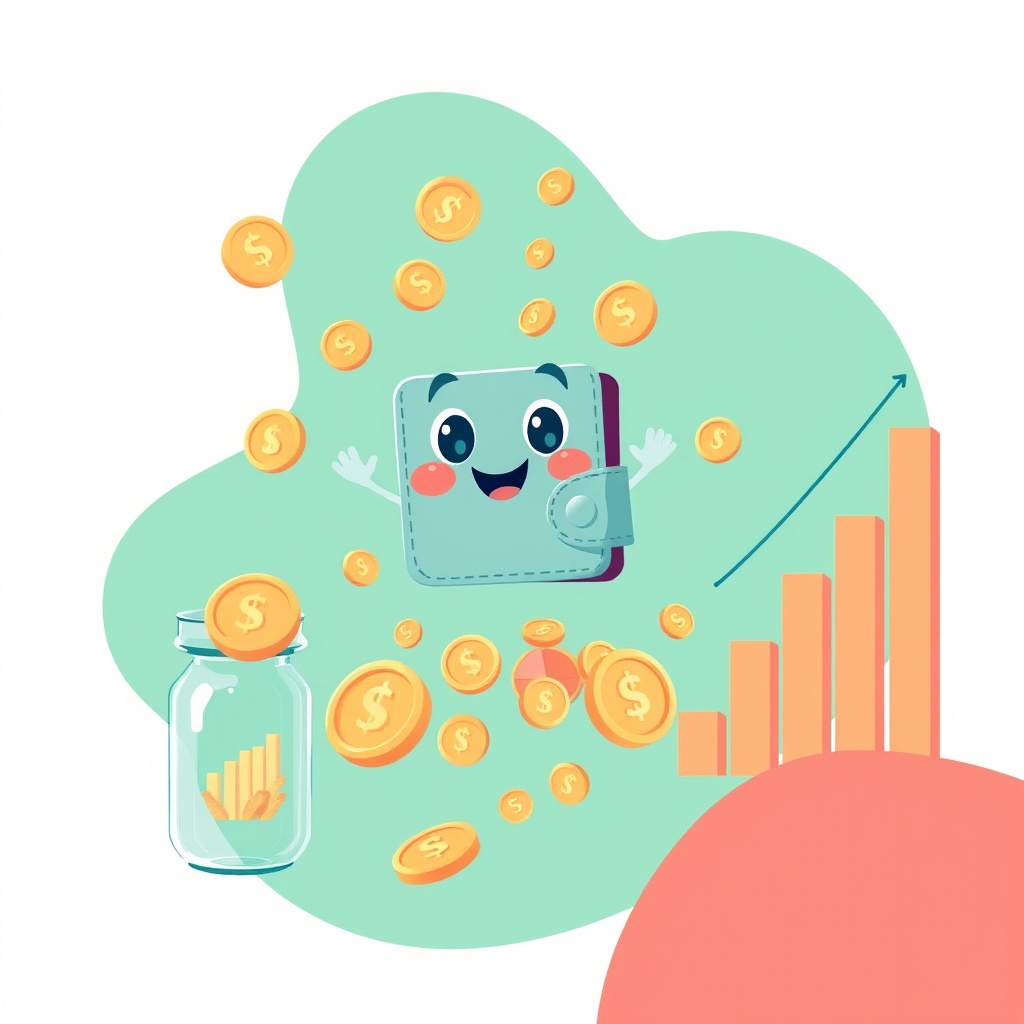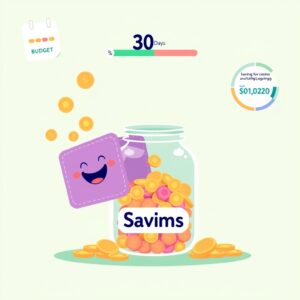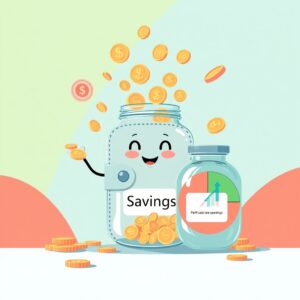Estimated reading time: 6 minutes
Key Takeaways
- Enhanced privacy and security by avoiding bank connections.
- Complete control over personal financial data.
- Flexible manual tracking tailored to individual financial activities.
- Offline accessibility for budgeting without internet.
- Comparison between manual input and automated budgeting apps.
Table of Contents
- Importance of Budgeting: The Key to Financial Wellness
- The Surge in Budgeting Apps
- Why Choose a Budget App Without Bank Connection
- Key Features to Look for in a Manual Input Budget App
- Top Budgeting Apps That Don’t Require Bank Sync
- Benefits of Using an Offline Budgeting App
- How to Effectively Use a Budget App Without Bank Connection
- Common Challenges and How to Overcome Them
- Comparison: Manual Input vs. Automated Budgeting Apps
- Conclusion
- Additional Resources
Importance of Budgeting: The Key to Financial Wellness
Budgeting is a pillar of financial health. It’s about more than just tracking expenses; it’s a method to ensure money is available for future needs while avoiding debt.
- Track Spending: Knowing where your money goes helps identify unnecessary expenses and redirect funds towards savings.
- Achieve Goals: Budgeting allows you to set achievable financial goals and systematically work toward them.
- Avoid Debt: By planning expenditures and savings, you can prevent overspending and reliance on credit.
According to research, effective budgeting is critical for personal financial health, highlighting its role in managing spending, saving, and avoiding debt.
The Surge in Budgeting Apps
With digital solutions on the rise, budgeting apps have surged in popularity due to the convenience they offer. These apps provide easy-to-use interfaces for keeping track of finances anywhere, anytime. However, many require linking to bank accounts, a concept that raises concerns for those who prefer to keep their financial data offline.
Why Choose a Budget App Without Bank Connection
Enhanced Privacy and Security
- No Sharing of Bank Credentials: By not syncing with bank accounts, users protect themselves from data leaks or breaches, ensuring their financial information remains confidential (source).
- Full Control Over Data: Users decide when and what financial information to record, offering complete personal oversight.
Flexibility and Control
For those who handle cash or prefer manual tracking, a budget app without bank connection offers:
- Manual Tracking: Allows personalized data entry and greater awareness of financial activities.
- No Bank Sync Needed: Users uncomfortable with sharing bank credentials can still enjoy app-based budgeting (source).
Key Features to Look for in a Manual Input Budget App
Simple Manual Input Capabilities
Manual input refers to the ability to personally record each transaction, thereby avoiding risks linked with automatic bank syncing. These apps allow quick and intuitive entry for income and expenses (source).
Customizable Categories
Creating personalized categories helps reflect unique financial profiles. Categories like “rent,” “groceries,” and “entertainment” can be tailored to the user’s needs (source).
User-Friendly Interface
A clear layout and easy navigation simplify the task of regular data entry and tracking expenses (source).
Offline Access
Many apps provide full functionality without needing an internet connection, making them ideal for travel or areas with low connectivity (source).
Top Budgeting Apps That Don’t Require Bank Sync
Here’s an overview of popular apps that allow manual input without automatic bank links:
Skwad
- Notable Features: Real-time updates, cross-platform availability, no bank-linking.
- Pros: Enhanced privacy, comprehensive management, user-governed information sharing.
- Cons: Lack of automatic transaction import.
- Pricing: Full features available across devices (source).
Spendee
- Notable Features: Customizable categories, shared wallets, manual entry.
- Pros: Free version available, family-friendly, customization options.
- Cons: Automatic sync available only in the premium version.
- Pricing: Basic Free, Premium $14.99-$22.99/year (source).
EasyBudget
- Notable Features: Simple manual tracking, customizable envelopes.
- Pros: Unlimited categories, easy usability.
- Cons: Lacks advanced features; all entries must be manual.
- Pricing: Free with one-time premium option (source).
YNAB (You Need A Budget)
- Notable Features: Strong budgeting method, educational workshops.
- Pros: Encourages manual input, optional import, high reported savings by users.
- Cons: Subscription required, complexity for beginners.
- Pricing: Approx. $50/year, Free 30-day trial (source).
Pennies
- Notable Features: Intuitive manual expense entry, daily spending targets, and colorful visual feedback.
- Pros: Designed for quick, low-effort logging; no bank connection required; perfect for cash-based or mixed spending.
- Cons: Lacks advanced reporting tools; focused more on everyday spending than long-term financial planning.
- Pricing: Free with premium options (source).
Benefits of Using an Offline Budgeting App
Accessibility
Offline budgeting apps provide functionality without needing an internet connection, ideal for logging transactions on the go or in low-connectivity environments (source).
Enhanced Security
By storing data offline, users reduce the risk of breaches and unauthorized cloud access (source).
Freedom and Flexibility
Users can operate independently of external servers or bank APIs, ensuring consistent performance.
How to Effectively Use a Budget App Without Bank Connection
Manual Setup
Start by setting clear budgeting goals. Set up categories that reflect actual expenses and input your starting balance manually.
Regular Updates
Maintain accuracy by consistently entering transactions, whether daily or weekly, depending on your cash flow.
Leverage Built-In Features
Utilize features like reminders, expense summaries, and charts to track expenses and stay informed.
Spreadsheet Integration
For deeper analysis, consider exporting data to Excel or Google Sheets for a comprehensive financial overview (source).
Common Challenges and How to Overcome Them
Manual Entry Errors
Earn accuracy by routinely updating transactions and double-checking receipts.
Maintaining Consistency
Encourage prompt usage with reminders or notifications, and make budgeting an integrated daily activity.
Staying Motivated
Visualize progress through graphical goals and celebrate milestones to maintain enthusiasm.
Comparison: Manual Input vs. Automated Budgeting Apps
| Feature | Manual Input Apps | Bank-Sync Apps |
|---|---|---|
| Privacy | High—no credentials shared | Lower—requires sensitive bank info |
| Ease | Requires regular effort | Automatic transaction pull and categorization |
| Customization | Very flexible categories; full control | Sometimes rigid; categories may be auto-assigned |
| Security | Minimal outside risk | Depends on third-party security |
| Learning curve | Potentially more involved initially | Easier for set-and-forget users |
Manual input apps offer significant privacy benefits—ideal for those needing offline access, handling cash predominantly, or skeptical about third-party security (source source). On the other hand, Automated apps provide convenience, covering most transactions automatically.
Conclusion
Opting for a budget app without bank connection can revolutionize personal finance by providing enhanced privacy, complete control over your data, and greater adaptability in various financial scenarios. While manual-input apps demand more interaction, they boost financial awareness and habitually improve decision-making in financial matters. Selecting between manual and automated approaches depends on personal comfort with technology, privacy concerns, and financial goals.
Additional Resources
- Skwad: Privacy-focused, no-bank-link budget app.
- Spendee, EasyBudget: Suitable manual input options for users.
- YNAB: An industry leader for hands-on/manual budgeting.
- Manual budgeting with spreadsheets tutorial.
- Broader strategies for financial management without automated tools.
- Pennies: Simple, quick, and visual budgeting without bank sync — ideal for everyday expense tracking.
FAQ
- What are the main benefits of using a budget app without bank connection?They offer enhanced privacy and security, complete control over your financial data, and flexibility in manual tracking without relying on internet connectivity.
- How can I ensure accuracy when manually entering transactions?By routinely updating transactions, double-checking receipts, and maintaining consistent entry habits, you can minimize manual entry errors.
- Are offline budgeting apps suitable for everyone?While they offer significant privacy and control benefits, they require more effort in manual entries. They are ideal for individuals who prioritize privacy and are comfortable with regular data input.



